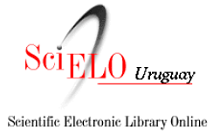In vitro DNA amplification (PCR)
II. Development and applications in the veterinary area
Keywords:
Veterinary diagnostic, Molecular biology, Genetic markers, Gene, PCRAbstract
The principal improvement in the detection systems had carried a rapid change in the diagnostic technology. The direct, indirect, radioactive and non radioactive systems usually used are more sensitive than traditional methods. Since the brief existence of Molecular Biology as a science several contributions had lead to the vertiginous technology revolution to what we now assist. They include: "restriction enzimes" that cut the DNA in specific sequences; nucleics and proteins sequencing, Restriction Fragments Large Polimorphism (RFLPs) and recently the PCR. In the first part the instrumentation and basic fundaments of PCR were described, and now in this paper the authors purpose is to relate a few technic applications in the veterinarian area.











